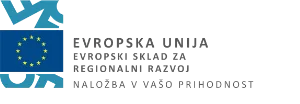A robust design process lays the foundation for successful outcomes, enables teams to collaborate effectively, and aligns their efforts. It aids in delivering measurable results, eliminating bias and subjectivity from design decisions, and provides user-centric designs that meet business requirements. It isn't just a set of steps—it's like having a compass guiding you through the creative wilderness, ensuring you reach your destination with precision and clarity.
Our design process used to be in the form of extensive "How to" documents with detailed descriptions and guidelines. Excellent, but proved to be very impractical. Recognizing this, we dedicated our efforts to review, improve, simplify, and visualize a framework that now aligns with our needs and those of our customers. In this blog post, I will share some of the benefits we identified at 3fs as a result of a well-defined and transparent design process.

We find it internally empowering with the following:
Better team collaboration
Picture a well-oiled machine where everyone knows their role and the overall mission. A well-defined design process gives the project team a clear framework, guidelines, and a shared understanding of project goals, deadlines, and expected outcomes. Shared clarity eliminates confusion, enhances communication, and nurtures a collaborative environment where team members synergize their efforts toward a common purpose.
Amplified efficiency of individual designers
Time is a valuable resource, and having a streamlined design process saves time - big time. With a well-defined roadmap, designers can navigate through their tasks with purpose and clarity. This efficiency can also free up their creative energy.
Better alignment among designers
Think of a design team as a fleet of ships. A well-defined process is their North Star, ensuring each ship sails in the same direction. Aligned ways of working ensure consistency and enable designers to seamlessly collaborate and draw from a shared pool of tailored resources.
Effective resource allocation
An explicit design process acts as a compass for resource distribution. That means clear steps, checkpoints, and the right people assigned to the right tasks at the right time, preventing bottlenecks and ensuring that projects progress optimally.
Easier and better onboarding of new designers
Having a structured process makes welcoming new designers a much simpler task. It's like providing them with a treasure map—a guide to understanding the company's design culture, practices, and expectations. Their integration is faster and they are empowered to contribute meaningfully from the very start.
We believe a well-defined and transparent design process can also have a big impact externally through:
Building trust
Trust is essential for a successful partnership. While a well-defined process cannot guarantee excellent results, it significantly reduces the risk of missteps. In our experience, customers who witness a commitment to a systematic approach feel more confident that their project is in capable hands and the chances of unexpected hiccups are minimized.
Communicating competence
The design process is a demonstration of one's expertise. By openly sharing the step-by-step approach, customers gain insight into skills and the thoughtfulness that goes into every design decision. This openness serves as evidence of competence, instilling confidence in the ability to deliver results.
Ensuring consistent, high-quality service
Consistency is the hallmark of professionalism. A transparent process ensures that every project adheres to the same high standards regardless of the scale. Customers can rest assured knowing that the quality of service they receive will be unwavering, reinforcing their confidence in our brand.
Setting clear expectations
Customers appreciate a journey with a visible destination. The design process should be a roadmap, clearly indicating what to expect at each stage. From initial concepts to final deliverables, customers know what lies ahead. The uncertainty is replaced by excitement for the journey.
Retaining and acquiring customers
Happy customers are the best advocates. When a good process leads to successful outcomes, word spreads. Satisfied customers become loyal partners, returning for more and referring others who seek the reliability and excellence that we consistently strive to deliver.
In a nutshell, we see a well-defined and transparent design process as more than a mere workflow — it's a strategic advantage that fuels our teamwork, elevates our design quality, and builds bonds with customers.




